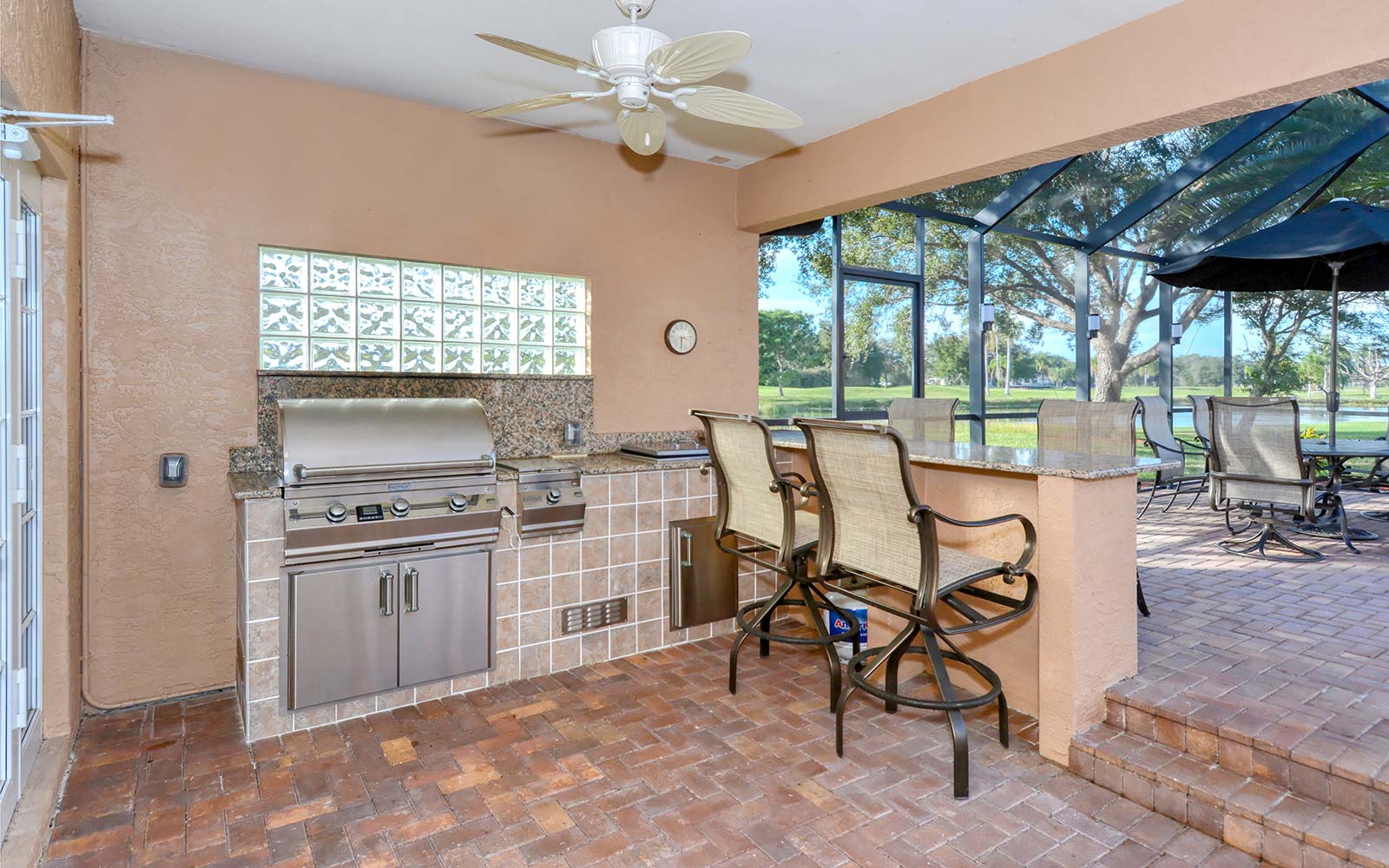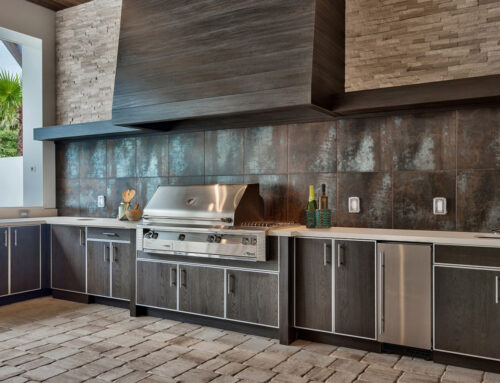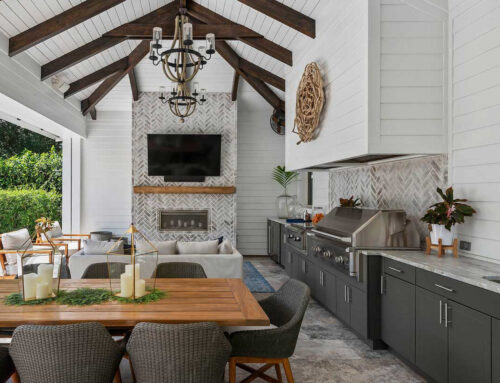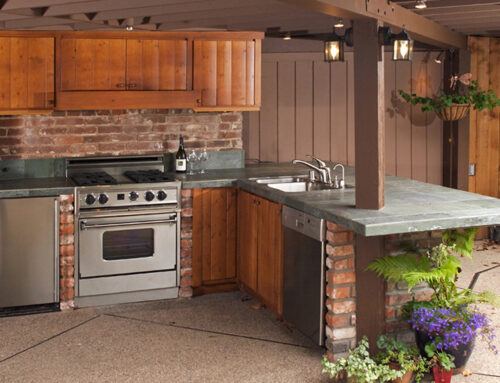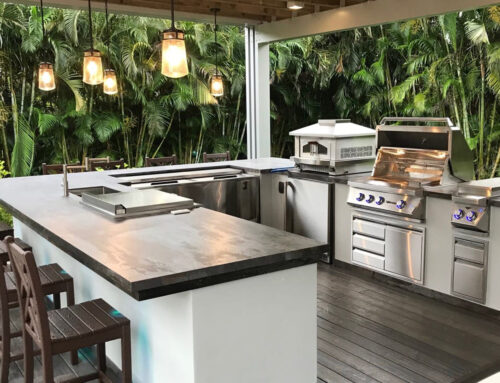Outdoor kitchens provide a great opportunity to expand your ability to entertain; however, you have to be intentional when choosing your outdoor equipment. Unlike regular kitchens, appliances that are used and stored outdoors need to be able to withstand nature’s weather extremes. Searching for durability does not mean you need to sacrifice style and appeal, though! You can find appliances, including venting hoods, that are functional, durable, and match your personal style and aesthetic goals for your landscape.
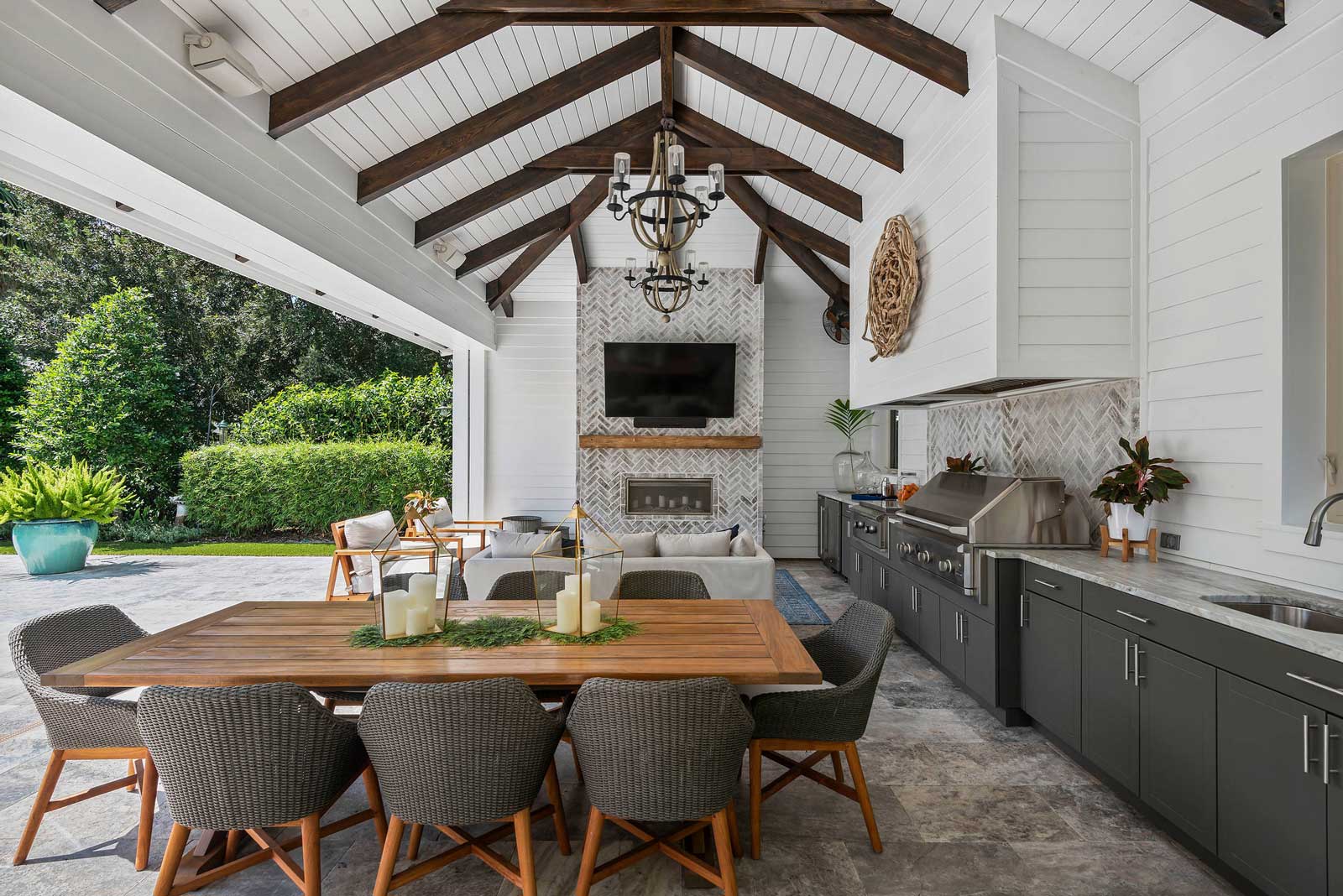
You may be wondering why a vent hood is even necessary in an outdoor cooking space. While it’s true that there is plenty of space for smoke, heat, grease, and other cooking by-products to dissipate, they still linger long enough to stain outdoor furniture or irritate the eyes of guests. It’s best for the health and comfort of everyone present, along with the appearance of your appliances and furniture, to install a vent hood that directs these by-products away. So how do you choose from the many venting hoods available to find the one that fits your needs? Here are a few tips to get you started.
- Choose a hood that fits the size of your grill. Venting hoods that are too small won’t be able to handle the amount of smoke emitted from the grill, and will cause it to back up and bypass the vent altogether. Oftentimes, grills will come with a manufacturer recommendation in their operation manual for the minimum size hood to use in conjunction with their appliance. If not, a good estimate is to buy a hood approximately 4 – 8 inches larger than the surface of your grill. Be sure to check the size of the vent in the hood as well–a vent at least 10 inches wide should be able to easily handle the amount of smoke emitted from the average grill. If you’re a grill master with a large countertop though, it would be a good idea to invest in dual vents or other modified technologies that increase the vent area of the hood.
- Placement is a key variable when choosing a hood. You can either get a roof cap hood or an outside wall hood. Both are good options, but have much different installations and specifications. Roof cap vents tend to be better about getting smoke and heat away quickly, but outdoor wall hoods tend to be a bit more feasible for outdoor cooking situations.
- Height also matters. Regardless of which you choose, make sure you have about three feet of space between the top of the grill and the start of the hood. This will give you enough space to cook without hitting your head while still being able to catch all the smoke that comes from the grill. Consult your contractor if you are unsure which works best for your al fresco cooking situation.
- Go with a high CFM. CFM is the measurement of how much air is moved by the vent’s fan. Since an outdoor hood needs to combat variable wind speeds along with the smoke from your grill, it’s recommended to choose a hood with fan speeds of at least 1,200 CFMs. This will help ensure that your hood can handle the outdoor cooking conditions.
Armed with the best knowledge and appliances, you’ll have an outdoor kitchen to entertain your family and friends for years to come! Better yet, call West Coast Design Build Florida to speak with a designer and begin to plan for your dream Sarasota outdoor kitchen today.
